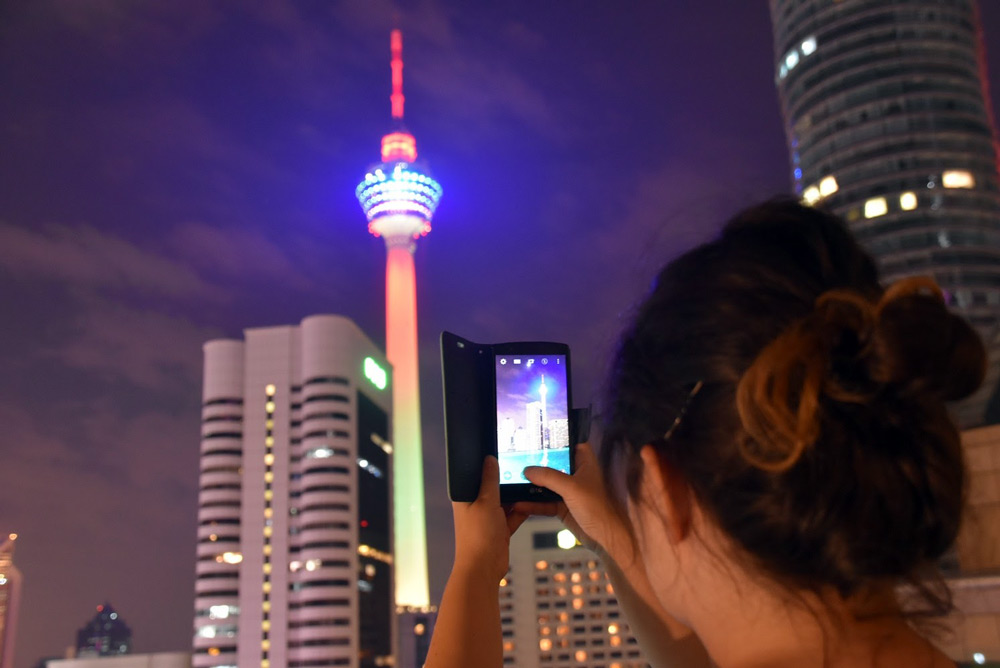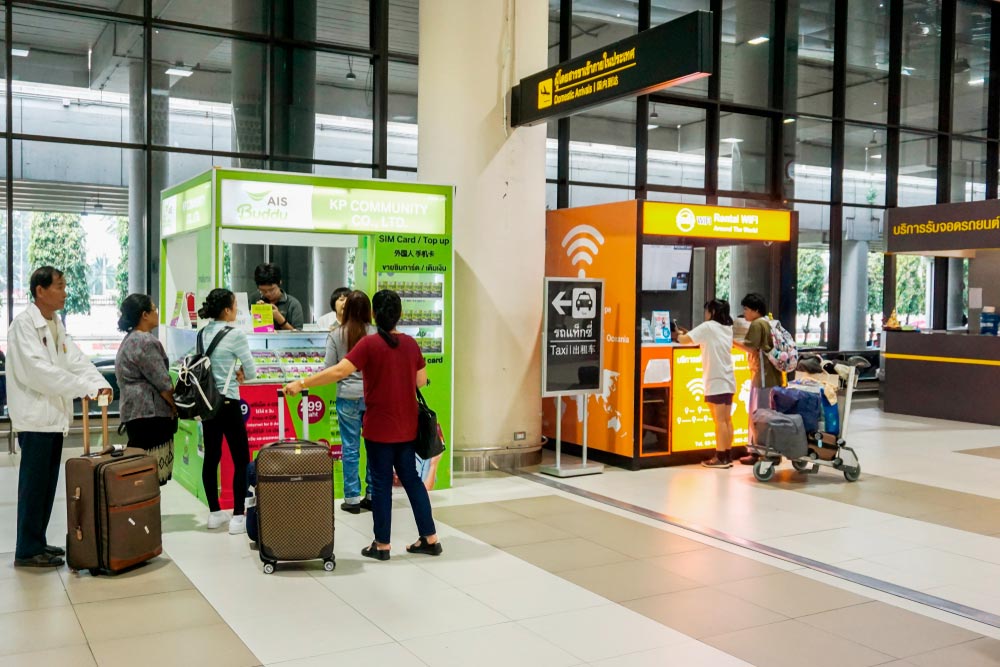At forblive forbundet mens man rejser i Asien er essentielt, uanset om du navigerer i de travle gader i Tokyo, bestiller en Grab i Bangkok, eller finder den bedste gadekost i Ho Chi Minh City.
Efter at have testet forskellige muligheder, kan jeg med sikkerhed sige, at eSIMs til Asien er den nemmeste og mest omkostningseffektive måde at få pålidelig mobilinternet i udlandet—ikke mere jagt på lokale SIM-kort eller håndtering af roaminggebyrer.
Med et eSIM til rejser kan du aktivere en data plan for Asien øjeblikkeligt på din telefon, og springe besværet med fysiske SIM-kort over. Men ikke alle eSIM-udbydere er ens. Nogle tilbyder ubegribelig data, mens andre leverer regionale eSIMs der fungerer i flere lande, perfekt til rejsende der hopper mellem Japan, Sydkorea, Thailand, Vietnam og videre.
iRoamly - #1 Rejse Simkort til Asien (Netværksdækning Overalt)
I denne guide vil jeg sammenligne de bedste eSIM-udbydere for Asien og evaluere dem på dækning, hastighed, pris og kompatibilitet. Uanset om du er digital nomade, hyppig forretningsrejsende eller bare på ferie, vil jeg hjælpe dig med at finde den bedste eSIM for Asien, så du kan forblive forbundet uden at sprænge budgettet.
Lad os dykke ned og udforske de bedste eSIM-muligheder for problemfri internetadgang i hele Asien
Internet i Asien, SIM-kort og eSIM
For de fleste rejser løses problemet med at have internet på din telefon hurtigt ved at købe et lokalt SIM-kort ved ankomsten, eller en eSIM, der er gyldig for det pågældende land, før du tager afsted. Men hvad med en rejse der involverer besøg i flere lande ?
Asien , og mere specifikt Sydøstasien , er en ideel region til at planlægge et eventyr, der krydser forskellige grænser, i den reneste backpacker-stil. Faktisk var den første store rejse, vi tog, netop her, tilbage i 2011, og vi blev så forelskede i dette land, at vi er vendt tilbage til Asien hvert år siden da.
På den rejse var den eneste måde at få en mobilforbindelse på at købe et SIM-kort i de første par dage efter ankomsten til et nyt land. Du ender med at have en samling af disse små chips i alle farver og mærker. Men med nye teknologier og fremkomsten af eSIMs er denne proces blevet meget forenklet, og der er endda muligheder, der giver dig mulighed for at at bruge en enkelt eSIM til hele turen gennem Asien , der arbejder i alle lande, uden at skulle foretage nogen justeringer.
Gennem hele denne artikel vi vil fokusere på disse to måder at have internet i Asien: lokale SIM-kort VS et enkelt eSIM til hele turen.
Vi har udelukket at bruge vores operatørs international roaming , da det ville være ekstremt dyrt, samt den såkaldte lomme wifi , enheder der udsender et internetsignal, som du kan forbinde til. De er noget som trådløse routere, som du lejer og tager med dig under rejsen, men som vi mener, ikke er praktiske (eller økonomiske) overhovedet.
Vi begrænser os ikke kun til gratis Wi-Fi i hoteller og restauranter. I Asien er disse netværk ekstremt udbredte og normalt meget hurtige, men at have internet på din mobil vil gøre denne type rejse meget lettere: at bestille en Grab, se på restaurantanmeldelser, åbne Google Maps, sende WhatsApp-beskeder osv. er ting, du vil gøre hver dag.
Vi vil diskutere hvordan at have internet i Asien nedenfor, analyserer den fordele og ulemper ved de forskellige alternativer , og deler vores egne erfaringer og anbefalinger med dig:

1. Køb et SIM-kort i hvert land i Asien
Dette er den standardmetode, som vi, de novice rejsende som os, altid har brugt. Vi har rejst rundt i verden i et par år nu. Det involverer at have en ulåst telefon med, som vi indsætter et SIM-kort fra et lokalt telekommunikationsselskab , som vi vil købe, når vi når vores destination.
Det er ikke den mest komfortable løsning. , da det kræver forudgående planlægning, indsamling af information om, hvilke der er de bedste operatører i hvert land, samt at finde den rigtige butik, vælge den plan der bedst passer til vores situation (lad os ikke glemme sprogbarrieren), installere SIM-kortet og betale. Det er en proces, der kan være lidt besværlig, men det vil give dig mulighed for at spare nogle penge, hvilket gør dette til billigste alternativ at have internet i Asien.
Nedenfor opsummerer vi hovedfordele og ulemper af valg af SIM-kort til en rejse til Asien:
+ Du vil have et lokalt nummer, som gør det muligt at foretage og modtage nationale opkald.
+ Du kan dele forbindelsen med andre enheder.
+ Der er flere operatører at vælge imellem, hver med deres egne priser og tilbud.
+ Den samlede pris vil være lidt lavere, forudsat at du vælger økonomiske planer.
– Du skal købe et SIM-kort hver gang, du krydser ind i et nyt land.
– Indkøbsprocessen kan være langsom, frustrerende og trættende (og vi er i stigende grad mindre interesserede i den).
– "Priserne varierer meget mellem officielle butikker og skranker i lufthavne, hvilket giver indtryk af at blive snydt."
– Data er ikke ubegrænset, så du skal regulere dit internetforbrug.
– På telefoner uden Dual SIM skal du erstatte dit sædvanlige kort med et nyt.

2. Et enkelt eSIM til hele turen til Asien
Bare ét kort til hele rejsen? Ja, Asia eSIM er beregnet til de rejsende, der planlægger et eventyr på tværs af flere lande på dette kontinent, og som ønsker at undgå den besværlige proces med at skifte til et andet SIM-kort ved hver destination.
Hvis du ikke er bekendt med dette udtryk, skal du vide, at eSIM'er er virtuelle kort som kan aktiveres på din mobiltelefon uden at skulle købe et fysisk kort. Den eneste væsentlige forudsætning er, at din telefon er kompatibel med denne teknologi. du kan tjekke modellerne her ).
Dens store fordel er, at du kan lad det være installeret før du starter turen og du vil ikke behøve at ændre det eller foretage yderligere justeringer, når du krydser grænser mellem lande. Blandt de virksomheder, der tilbyder disse tjenester, anbefaler vi normalt Holafly , som har specialiseret sig i eSIM'er til enhver destination i verden.
De lande inkluderet i denne asiatiske eSIM er : Sydkorea, Japan, Cambodja, Vietnam, Thailand, Taiwan, Singapore, Malaysia, Indonesien, Filippinerne og Laos. Hvis du også skal rejse gennem Kina , vi anbefaler at læse vores artikel om hvordan man får internet i Kina , med ekstra tips til at have internet under din rejse til den asiatiske kæmpe. I dette tilfælde, Holafly's Kina eSIM allerede inkluderer VPN'en, der vil hjælpe dig med at "springe over" Den Store Firewall.
Hvad angår pris , det har en tendens til at være lidt dyrere, især for lange ture, da den endelige pris afhænger af, hvor mange dage turen varer. Men hvis du for eksempel planlægger at tilbringe 15 dage med at besøge Thailand, Vietnam og en hurtig udflugt til Cambodja, er det muligt, at det endda vil være billigere at købe en eSIM end 3 lokale SIM-kort, især hvis du gør det i lufthavnene.
Vi opsummerer fordele og ulemper at vælge at købe et eSIM for at have internet på en rejse til Asien:
+ Bestillingen er online, og du kan gøre det fra hvor som helst i verden, selvom du allerede er i Asien.
+ Installation er hurtig og nem, ved hjælp af en QR-kode, der straks vil blive sendt til dig via e-mail.
+ Dataen er ubegribelig, hvilket giver dig mulighed for at bruge din mobil så meget, du vil.
+ Du behøver ikke at fjerne dit primære SIM-kort, så du kan fortsætte med at modtage opkald eller SMS på dit sædvanlige nummer.
+ Du vil være forbundet fra det øjeblik, du lander, indtil slutningen af din rejse.
+ Du undgår at lede efter et lokalt SIM-kort ved hver destination.
+ De tilbyder 24-timers assistance via WhatsApp i tilfælde af eventuelle fejl under rejsen.
– Ikke alle telefoner har et integreret eSIM.
– Tillader kun deling af 500 Mb pr. dag med andre enheder.
– Prisen vil være højere.
– Du vil ikke kunne foretage lokale opkald, selvom du kan bruge apps som WhatsApp, Telegram osv. uden ekstra omkostninger eller justeringer.

Ofte stillede spørgsmål om SIM- og eSIM-kort i Asien
For at afslutte vores guide om, hvordan man får internet i Asien, besvarer vi de spørgsmål, der normalt opstår, når man er dybt inde i søgningen efter disse oplysninger:
› Skal jeg købe flere SIM-kort eller bare ét?
Det afhænger af den mulighed, du vælger. Hvis du vil bruge lokale operatører, skal du købe et SIM-kort hver gang, du træder ind i et nyt land. På den anden side er der en eSIM til Asien fra Holafly som giver dig mulighed for at have internet på din telefon under hele din rejse, inklusive grænseovergange.
› Vil jeg kunne bruge WhatsApp?
Ja, i alle tilfælde. Husk at WhatsApp fungerer simpelthen med en internetforbindelse, uanset kilden til forbindelsen, så du kan bruge det uden at skulle foretage nogen justeringer.
› Hvilken mulighed anbefaler vi?
For korte ture til flere asiatiske lande er muligheden for en enkelt eSIM meget attraktiv, især for at spare dig for noget besvær. Hvis du ikke har noget imod at bruge lidt tid og kræfter, vil det være lidt billigere at købe lokale SIM-kort.
› Hvordan er internettet i Asien?
Denne kontinent har den hurtigste internetforbindelse i verden, som vi så på vores rejse til Sydkorea, for eksempel. Desuden er priserne ret overkommelige sammenlignet med andre lande.
› Vil jeg have brug for en VPN?
"Det er ikke strengt nødvendigt, men det anbefales at bruge denne type værktøj for at browse sikkert, når man bruger Wi-Fi-netværk."

Afslutningsvis er det essentielt at have internetadgang under din rejse til Asien for fuldt ud at nyde din rejse, og det bliver lettere takket være nye teknologier.
Uanset om du køber et lokalt SIM-kort i hvert land eller vælger en enkelt eSIM til Asien, er der altid en løsning, der passer til dine behov og dit budget. Gør dig klar til at udforske og forblive online uden komplikationer.
Bedste Boutique Hoteller
Bedste Boutique Hotel Maine | Bedste Boutique Hotel Wisconsin | Bedste Boutique Hotel Isla Mujeres | Bedste Boutique Hotel Saigon | Bedste Boutique Hotel San Jose del Cabo | Bedste Boutique Hotel Vermont | Bedste Boutique Hotel Victoria | Bedste Boutique Hotel Curacao | Bedste Boutique Hotel Centralamerika | Bedste boutiquehotel Condesa Mexico City
Udvalgte Boutiquehoteller
Bedste Boutique Hotel Honolulu | Bedste Boutique Hotel Orlando | Bedste Boutique Hotel Tampa | Bedste Boutique Hotel Medellin | Bedste Boutique Hotel Oregon | Bedste Boutique Hotel Osaka | Bedste Boutique Hotel Puerto Escondido | Bedste Boutique Hotel Seoul | Bedste Boutique Hotel Waikiki | Bedste Boutique Hotel Belize | Bedste Boutique Hotel Detroit | Bedste Boutique Hotel Virginia


























































